Situated on The Grove, this pub takes the name Goldengrove from the poem Spring and Fall, by Gerard Manley Hopkins. The highly acclaimed Victorian poet was born in Stratford in 1844.
Framed illustrations and text about Lord Lister and Elizabeth Fry.
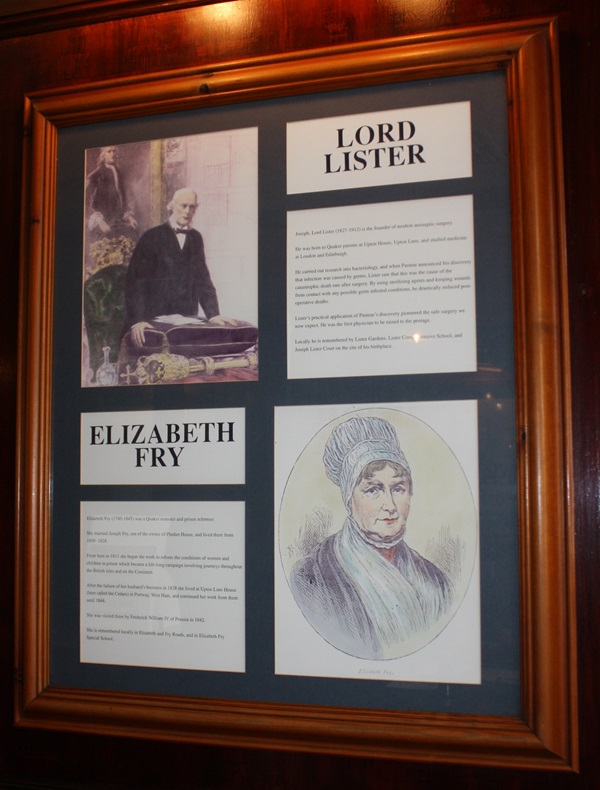
The text reads: (top right) Joseph, Lord Lister (1827-1912) is the founder of modern antiseptic surgery.
He was born to Quaker parents at Upton House, Upton Lane, and studied medicine at London and Edinburgh.
He carried out research into bacteriology, and when Pasteur announced his discovery that infection was caused by germs, Lister saw that this was the cause of the catastrophic death rate after surgery. By using sterilising agents and keeping wounds from contact with any possible germ infested conditions, he drastically reduced post-operative deaths.
Lister’s practical application of Pasteur’s discovery pioneered the safe surgery we now expect. He was the first physician to be raised to the peerage.
Locally he is remembered by Lister Gardens, Lister Comprehensive School, and Joseph Lister Court on the site of his birthplace.
(Bottom left) Elizabeth Fry (1780-1845) was a Quaker minister and prison reformer.
She married Joseph Fry, son of the owner of Plashet House, and lived there from 1809-1828.
From here in 1813 she began the work to reform the conditions of women and children in prison which became a life-long campaign involving journeys throughout the British Isles and on the Continent.
After the failure of her husband’s business in 1828 she lived at Upton Lane House (later called the Cedars) in Portway, West Ham, and continued her work from there until 1844.
She was visited there by Fredrick William IV of Prussia in 1842.
She is remembered locally in Elizabeth and Fry Roads, and in Elizabeth Fry Special School.
A framed photograph and text about Thomas Fry.
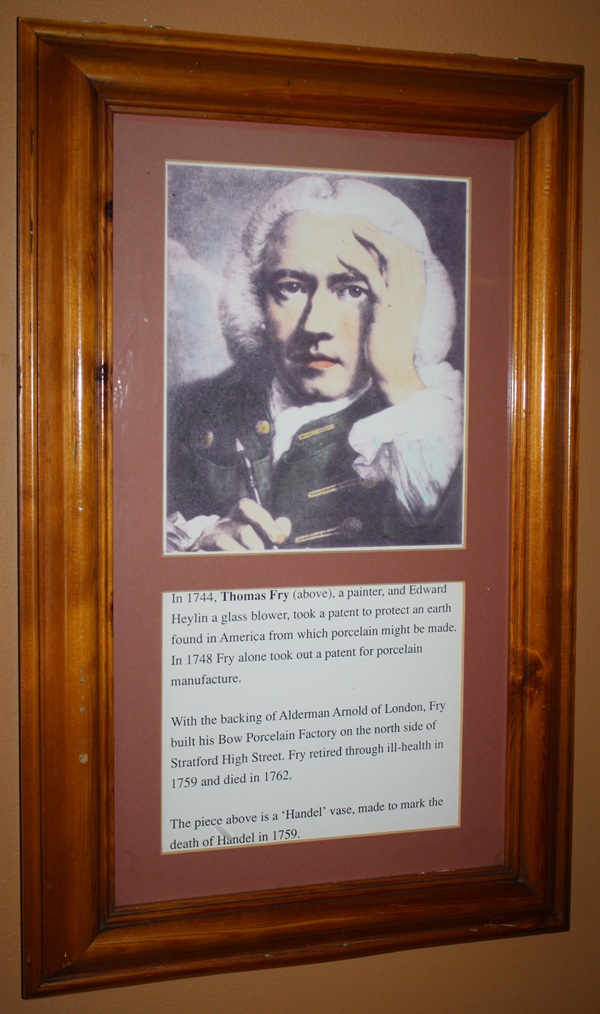
The text reads: In 1744, Thomas Fry (above), a painter, and Edward Heylin a glass blower, took a patent to protect an earth found in America from which porcelain might be made. In 1748 Fry alone took out a patent for porcelain manufacture.
With the backing of Alderman Arnold of London, Fry built his Bow Porcelain Factory on the north side of Stratford High Street. Fry retired through ill-health in 1759 and died in 1762.
The piece above is a ‘Handel’ vase, made to mark the death of Handel in 1759.
A framed collection of illustrations and text about industry in the local area.
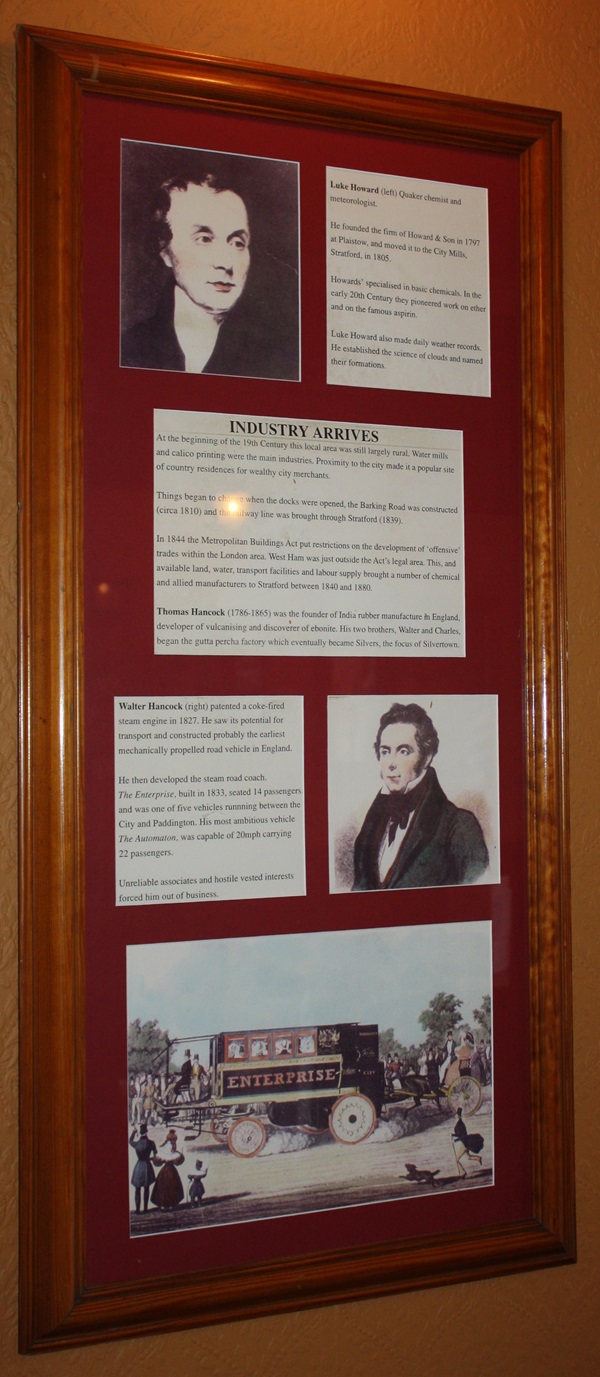
The text reads: (top left) Luke Howard Quaker chemist and meteorologist.
He founded the firm of Howard & Son in 1797 at Plaistow, and moved it to the City Mills, Stratford, in 1805.
Howards’ specialised in basic chemicals. In the early 20th Century they pioneered work on ether and on the famous aspirin.
Luke Howard also made daily weather records. He established the science of clouds and named their formations.
(Centre) At the beginning of the 19th Century this local area was still largely rural. Water mills and calico printing were the main industries. Proximity to the city made it a popular site of country residences for wealthy city merchants.
Things began to change when the docks were opened, the Barking Road was constructed (circa 1810) and the railway line was brought through Stratford (1839).
In 1944 the Metropolitan Buildings Act put restrictions on the development of ‘offensive’ trades within the London area. West Ham was just outside the Act’s legal area. This, and available land, water, transport facilities and labour supply brought a number of chemical and allied manufacturers to Stratford between 1840 and 1880.
Thomas Hancock (1786-1865) was the founder of India rubber manufacture in England, developer of vulcanising and discoverer of ebonite. His two brothers, Walter and Charles, began the gutta percha factory which eventually became Silvers, the focus of Silvertown.
(Bottom left) Walter Hancock (right) patented a coke-fired steam engine in 1827. He saw its potential for transport and constructed probably the earliest mechanically propelled road vehicle in England.
He then developed the steam road coach. The Enterprise, built in 1833, seated 14 passengers and was one of five vehicles running between the City and Paddington. His most ambitious vehicle The Automaton was capable of 20mph carrying 22 passengers.
Unreliable associates and hostile vested interests forced him out of business.
Framed illustrations and text about Charles II.
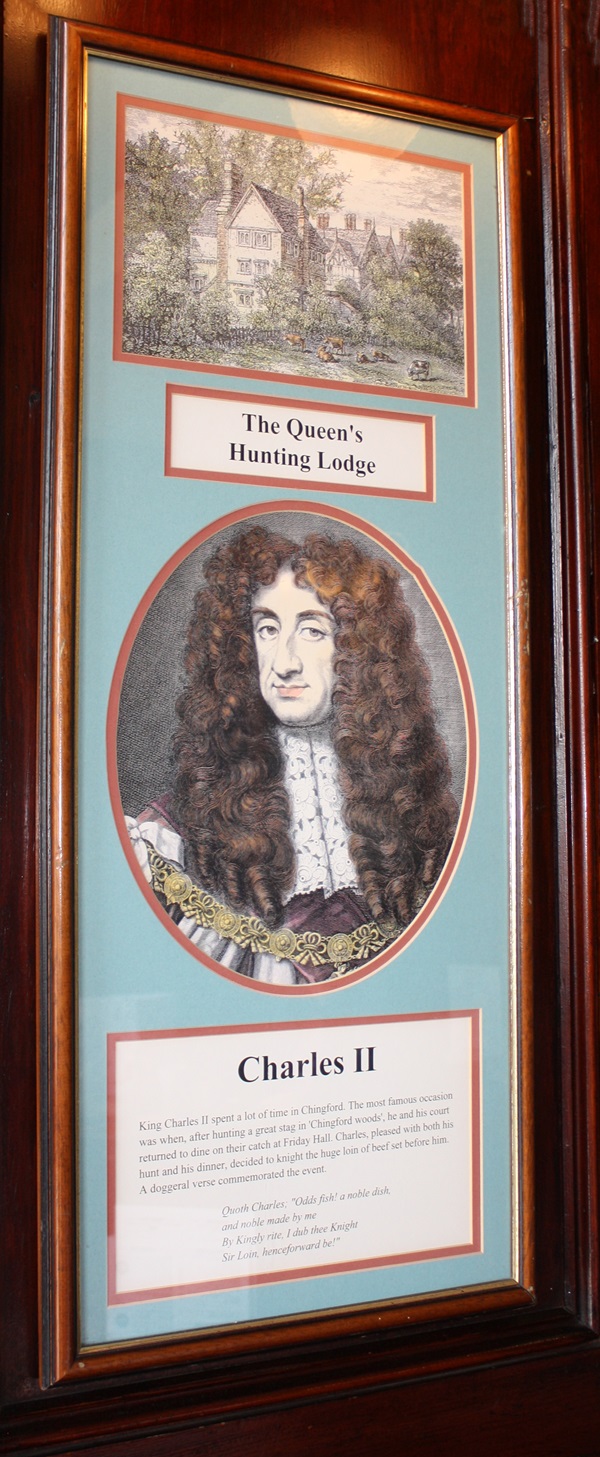
The text reads: King Charles II spent a lot of time in Chingford. The most famous occasion was when, after hunting a great stag in ‘Chingford woods’, he and his court returned to dine on their catch at a Friday Hall. Charles, pleased with both his hunt and his dinner, decided to knight the huge loin of beef set before him. A doggerel verse commemorated the event.
Quoth Charles; “Odds fish! a noble dish,
and noble made by me
By Kingly rite, I dub thee Knight
Sir Loin, henceforward be!”
Framed maps of Stratford and its locality from Roman times to the 18th century.
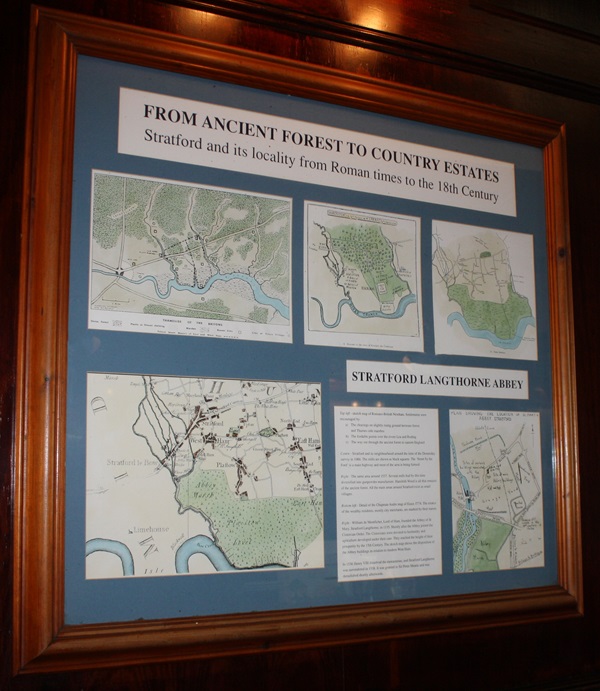
Framed illustrations, photographs and text about mills and bridges.
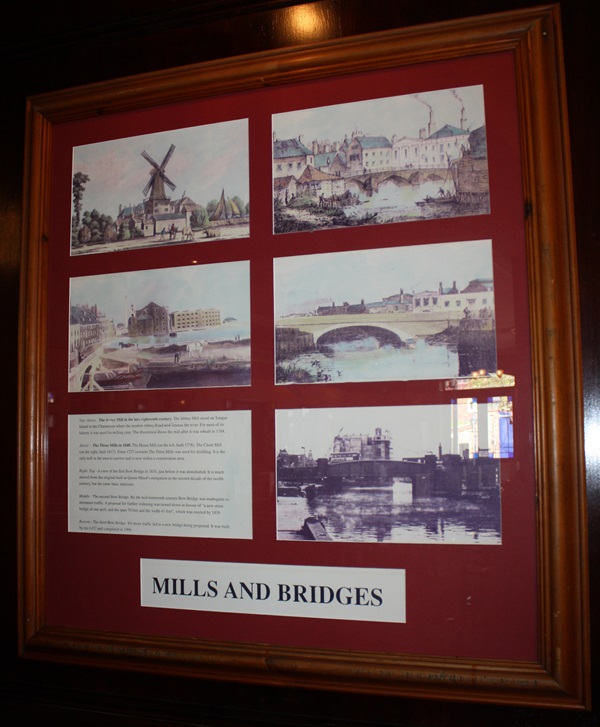
The text reads: Top: Above – The Abbey Mill in the late eighteenth century. The Abbey Mill stood on Tongue Island in the Channel sea where the modern Abbey Road now crosses the river. For most of its history it was used for milling corn. The illustration shows the mill after it was rebuilt in 1768.
Above: - The Three Mills in 1840. The House Mill (on the left, built 1776). The Clock Mill (on the right, built 1817). From 1727 onwards The Three mills was used for distilling. It is the only mill in the area to survive and is now within a conservation area.
Right: Top –A view of the first Bow Bridge in 1835, just before it was demolished. It is much altered from the original built at Queen Maud’s instigation in the second decade of the twelfth century, but the same basic structure.
Middle –The second Bow Bridge. By the mid nineteenth century Bow Bridge was inadequate to increased traffic. A proposal for further widening was turned down in favour of “a new stone bridge of one arch, and the span 70 feet and the width 41 feet”, which was erected by 1839.
Bottom – The third Bow Bridge. Yet more traffic led to a new bridge being proposed. It was built by the LCC and completed in 1906.
Framed photographs and text about David Horne and Anne Farrer.
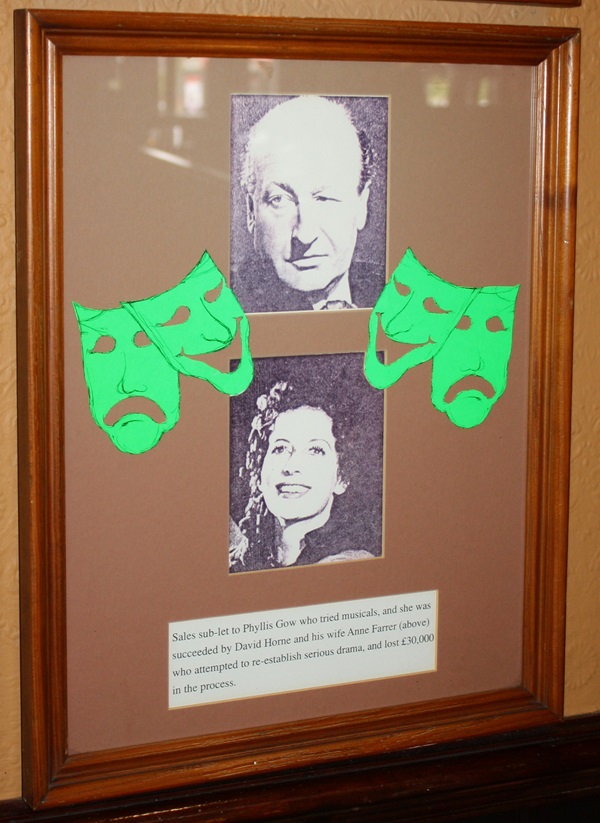
The text reads: Sales sub-let to Phyllis Gow who tried musicals, and she was succeeded by David Horne and his wife Anne Farrer (above) who attempted to re-establish serious drama, and lost £30,000 in the process.
A framed photograph and text about theatre manager J Roland Sales.
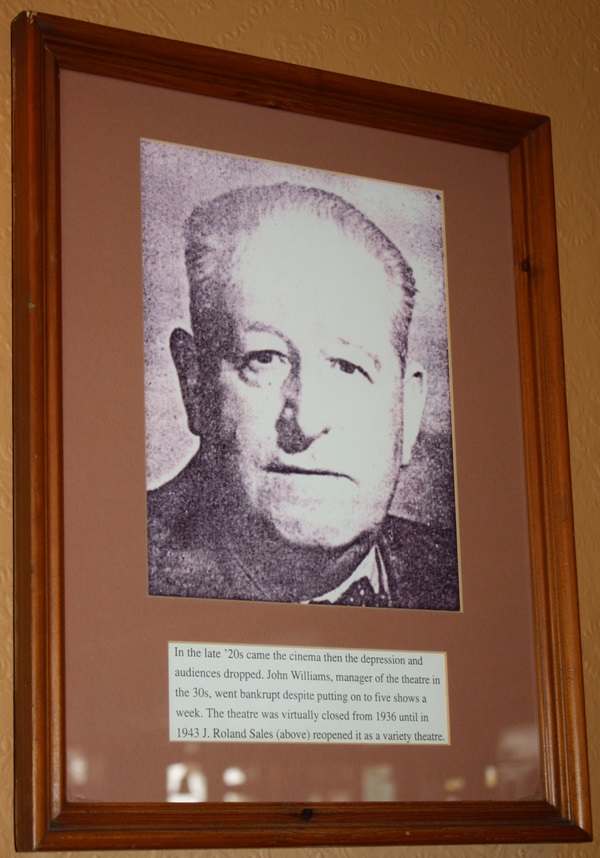
The text reads: In the late ‘20s came the cinema then the depression and audiences dropped., John Williams, manager of the theatre in the 30s, went bankrupt despite putting on to five shows a week. The theatre was virtually closed from 1936 until in 1943 J. Roland Sales (above) reopened it as a variety theatre.
Framed photographs of Harry H Corbett (left) and Richard Harris (right).
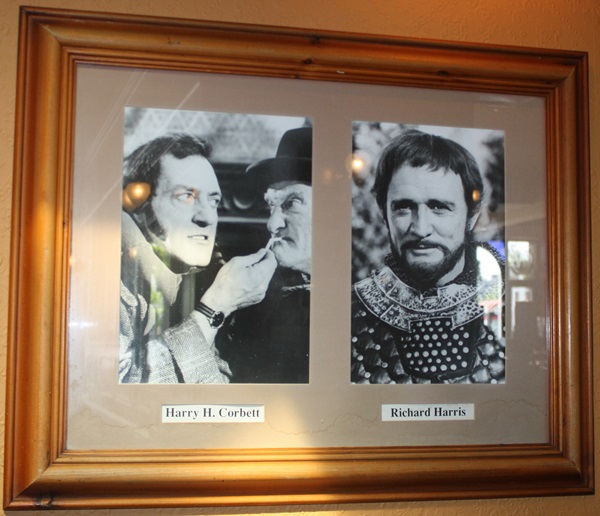
Framed photographs and text about the 1980 FA Cup winners.
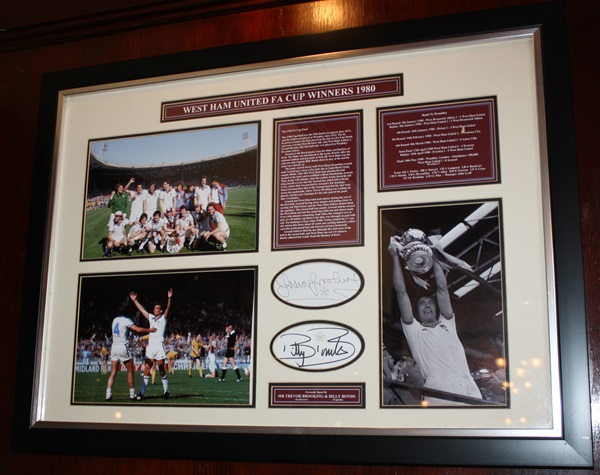
The text reads: The 1980 Cup Final was the 99th final to be played since 1872, and the 52nd to be played at Wembley since 1923. The tie involved Arsenal, who had played in the last two FA Cup Finals and were a strong First Division side, and West Ham United, a Second Division side that had only ever played at Wembley five times before.
Present as the royal guests were the Duke and Duchess of Kent. The Duke was introduced to the teams directly after the national anthem and just prior to kick off. West Ham won the coin toss and Captain Billy Bonds chose to stay at the end his team were already at.
The game started slowly with West Ham not getting a touch until Arsenal gave away a free kick due to Liam Brady being caught offside. After this West ham kept playing the ball around at the back and in midfield without threatening Arsenal. Then, in the 12th minute, Alan Devonshire broke down the left wing and hit a cross into the Arsenal box which fell to David Cross, whose shot was parried by Arsenal’s Pat Jennings. Stuart Pearson then shot at the Arsenal goal but his shot went across the goalmouth, where Trevor Brooking was waiting; he placed a header past Jennings for the only goal of the game after 13 minutes.
Arsenal and West Ham both had attacks during the rest of the first half, Arsenal having more attacks and getting closer to scoring, but Phil Parkes and the West ham defence denied them the equaliser. The second half was mainly Arsenal attacks toward the West Ham end, but the underdogs held out and almost made it two with minutes remaining. Paul Allen, the youngest ever to play at a Wembley Cup Final at the time, was through on goal with only Pat Jennings to beat, when Willie Young tackled the 17 year old, taking him down about 25 yards out, earning himself a yellow card (the professional foul rule had not yet been instituted).
Arsenal failed to find the net although they had most of the ball in the second half, and West Ham ran out 1-0 winners. Bonds collected the trophy from the Duchess of Kent.
Framed photographs of Stratford Church.
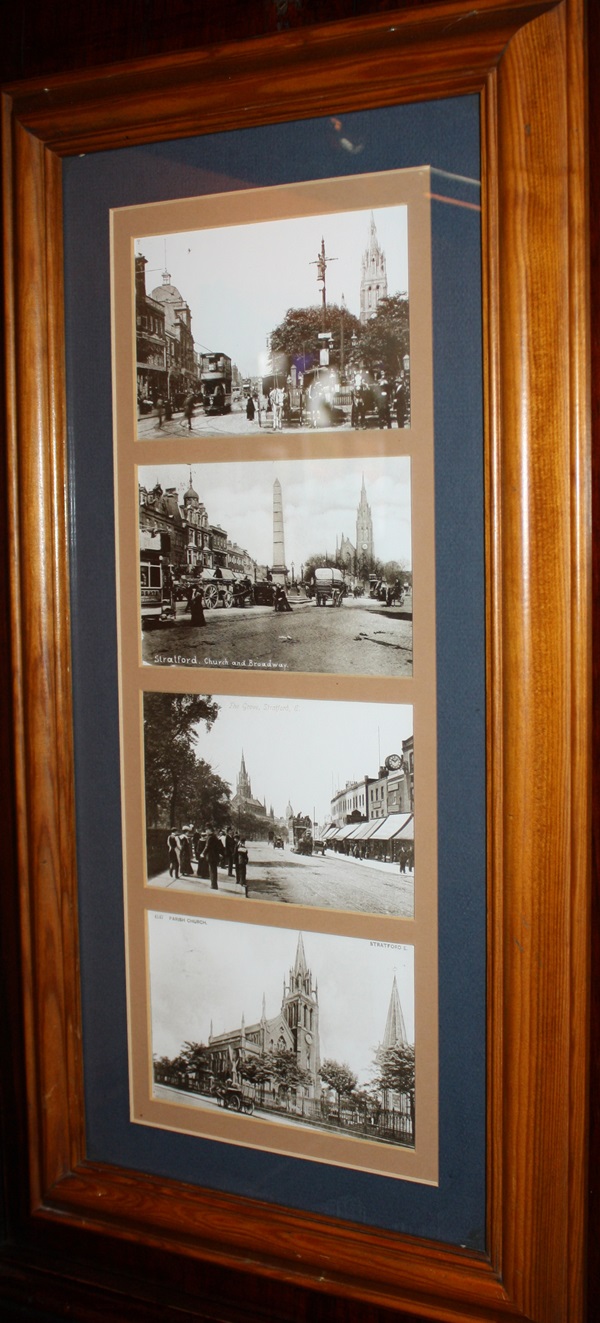
A framed photograph of the Grove c1928.
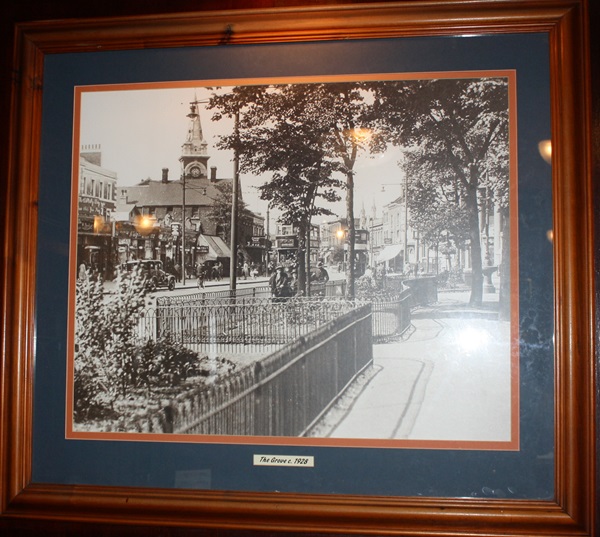
Framed photographs of Stratford Broadway.
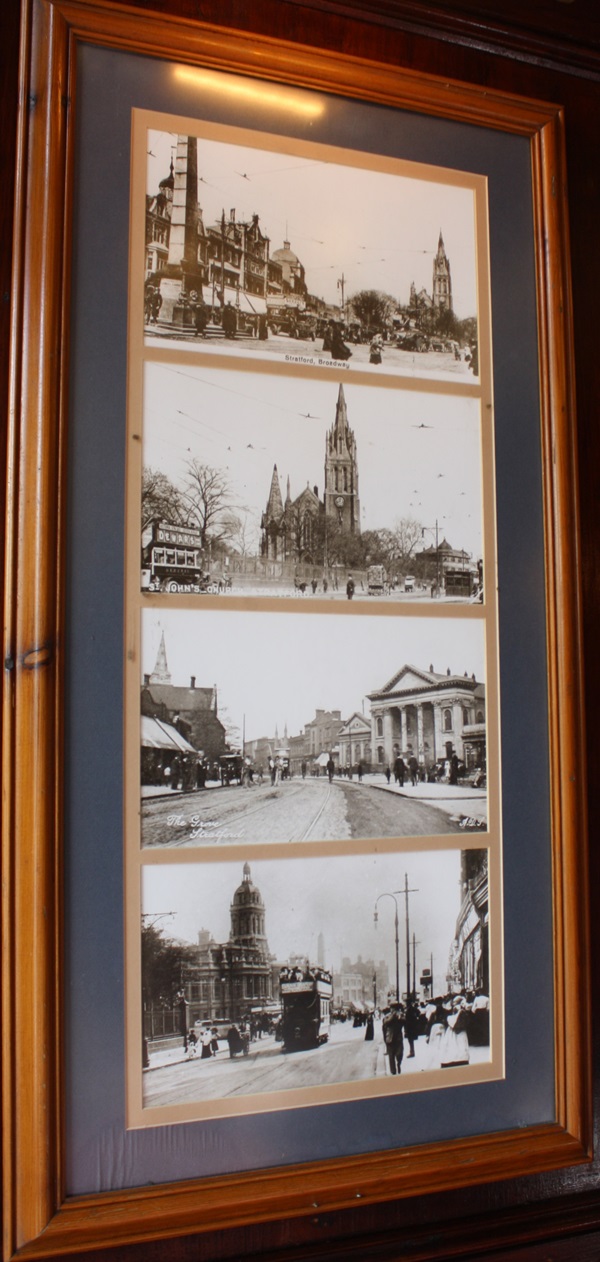
A framed photograph of Victoria Street c1906.
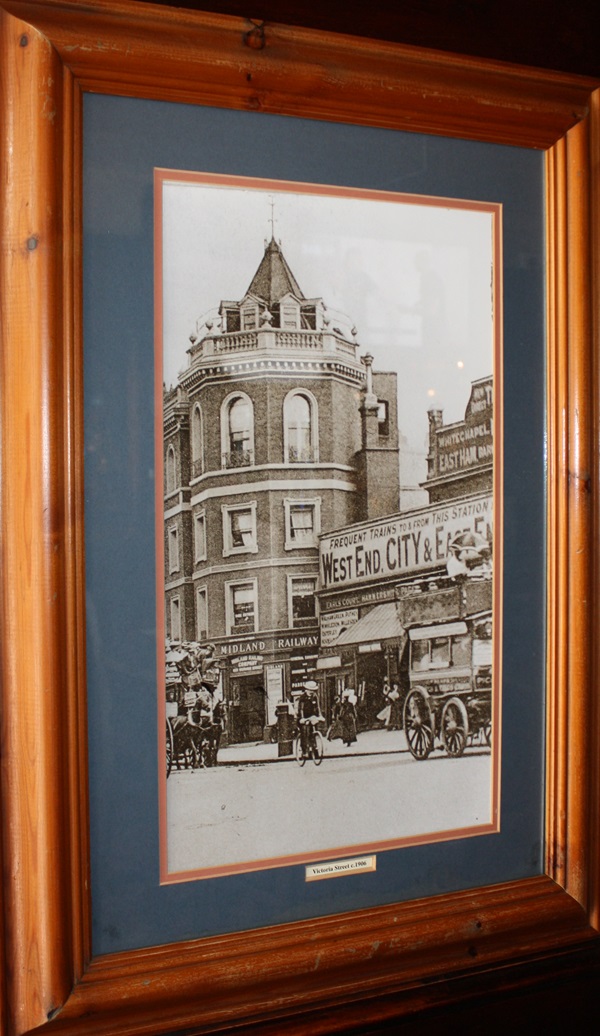
A plaque detailing The London 2012 Mural – found on the external wall of the building.
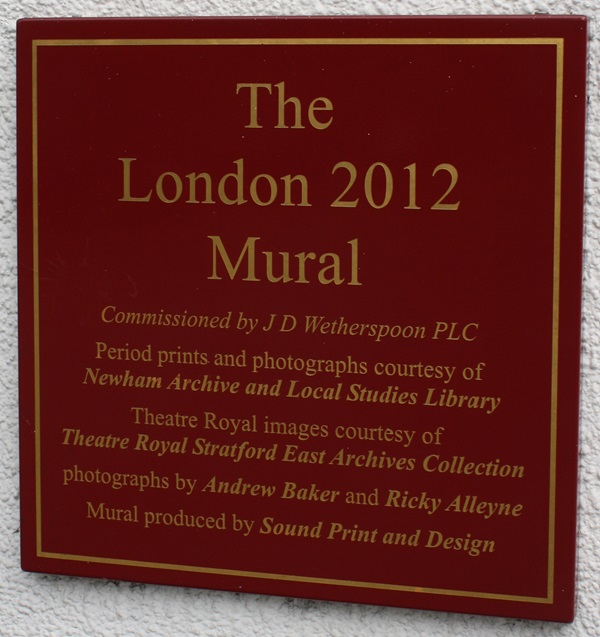
Parts of The London 2012 Mural, commissioned by J D Wetherspoon.
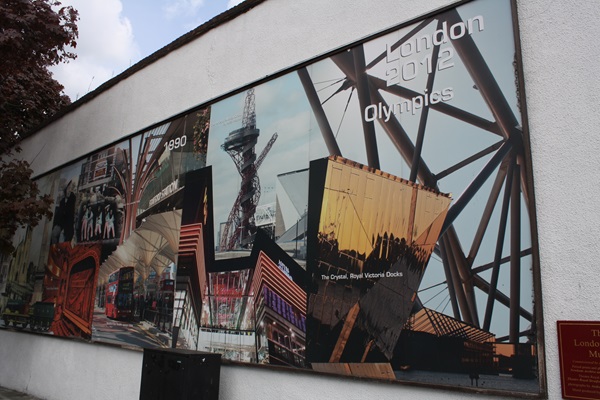
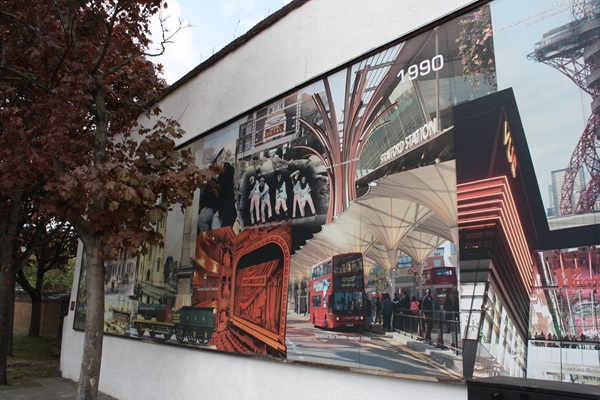
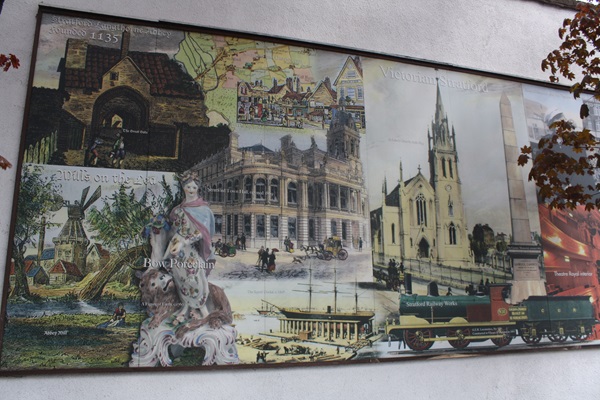
If you have information on the history of this pub, then we’d like you to share it with us. Please e-mail all information to: pubhistories@jdwetherspoon.co.uk